RADICAL STITCH: THE EVOLVING ART OF BEADWORK
The Eiteljorg Museum of American Indians and Western Art will host one of the largest exhibitions of contemporary Native bead art ever presented in North America: Radical Stitch features approximately 100 works of bead art highlighting Native techniques and designs that tell stories and address current issues.

Opening April 12 at the Eiteljorg and continuing through August 3, Radical Stitch is a traveling exhibition organized by the MacKenzie Art Gallery in Regina, Saskatchewan, Canada. At the Eiteljorg, the exhibition's only U.S. stop, visitors will experience breathtaking examples of bead art created by Native American / Indigenous artists from the U.S. and Canada.
Introduced into North America in the early 1800s as trade goods, glass beads became an artistic medium for generations of Native artists, whose limitless creativity expanded beadwork far beyond adornment of textiles into an innovative art form encompassing historic cultural traditions and contemporary expressions. The co-curators of Radical Stitch selected artworks that represent thematic strands of today's Native / Indigenous bead art — including pop culture references, current issues such as food sovereignty, and Indigenous Futurism, artworks that re-envision the past, present and future through a sometimes sci-fi lens.
-
Katherine Boyer (Métis). The Sky Vest, 2021. Seed beads on smoked moosehide, 48 x 24 x 10 inches. Collection National Gallery of Canada, Ottawa. © Katherine Boyer. Photo: Don Hall, Courtesy MacKenzie Art Gallery
-
Katherine Boyer (Métis). The Sky Vest, 2021. Seed beads on smoked moosehide, 48 x 24 x 10 inches. Collection National Gallery of Canada, Ottawa. © Katherine Boyer. Photo: Don Hall, Courtesy MacKenzie Art Gallery
-
Jean Marshall (Anishinaabe). Gitigan | Garden, Bandolier Bag, 2015. Glass beads, ribbon, metal jingles, wool cloth, ric rac. Indigenous Art Collection, Crown-Indigenous Relations and Northern Affairs Canada. MacKenzie Art Gallery, 2022. Photo: Don Hall, courtesy of the MacKenzie Art Gallery
-
Jennine Krauchi (Métis). Beaded coat/ muff/hat, 2022. Fabric, fur, beads. Indigenous Art Collection, Crown-Indigenous Relations and Northern Affairs Canada. Photo: Don Hall, courtesy of the MacKenzie Art Gallery
-
Nico Williams (Aamjiwnaang First Nation Anishinaabe). Aaniin, 2002. Glass beads. Collection of the artist. Photo: Don Hall, courtesy of the MacKenzie Art Gallery
-
Bev Koski (Anishinaabe). Disneyland, California #1, 2014. Beads, thread, found object. Indigenous Art Collection, Crown-Indigenous Relations and Northern Affairs Canada
"The artworks in this exhibition hold a visual potency that's impossible to capture in a photograph. When viewed in person, these meticulous details and faceted surfaces are dazzling to behold — and contain meaningful connections to both global exchange and cultural resilience," said Laura Fry, Eiteljorg vice president for curatorial affairs and collections.
Artists whose works are celebrated in Radical Stitch represent distinct geographies and life experiences that shape their bead art practices. Seven of the artists also are past recipients of the Eiteljorg Contemporary Art Fellowship and the museum has other examples of their bead art in its permanent collections.
For more than 35 years, the Eiteljorg Museum of American Indians and Western Art has been an integral part of the cultural fabric of Indianapolis and scenic White River State Park. The Eiteljorg Museum explores the intersection of the arts, histories and cultures of the past and present by sharing the diverse stories of the American West and the Indigenous Peoples of North America.
Radical Stitch will be on display from St. April 12, 2025, until August 3, 2025, at 500 W. Washington Indianapolis (United States).
Related Topics
May interest you
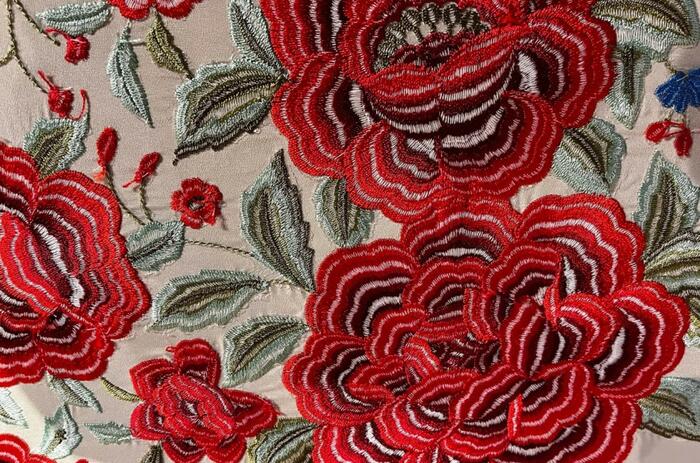
The Center for Art, Research and Alliances (CARA) spring 2025 exhibition, continents like seeds, brings together the work of La Chola Poblete (b. 1989, Argentina), Niño de Elche (b. 1985, Spain), and Pedro G. Romero (b. 1964, Spain); through sound, sculpture, performance, drawing, and painting, the show unravels and exposes the contradictions and ambiguities of colonial legacies.
QUESTIONING TRADITIONS AT CARA
The Center for Art, Research and Alliances (CARA) spring 2025 exhibition, continents like seeds, brings together the work of La Chola Poblete (b. 1989, Argentina), Niño de Elche (b. 1985, Spain), and Pedro G. Romero (b. 1964, Spain); through sound, sculpture, performance, drawing, and painting, the show unravels and exposes the contradictions and ambiguities of colonial legacies.

The Center for Art, Research and Alliances (CARA) spring 2025 exhibition, continents like seeds, brings together the work of La Chola Poblete (b. 1989, Argentina), Niño de Elche (b. 1985, Spain), and Pedro G. Romero (b. 1964, Spain); through sound, sculpture, performance, drawing, and painting, the show unravels and exposes the contradictions and ambiguities of colonial legacies.
QUESTIONING TRADITIONS AT CARA
The Center for Art, Research and Alliances (CARA) spring 2025 exhibition, continents like seeds, brings together the work of La Chola Poblete (b. 1989, Argentina), Niño de Elche (b. 1985, Spain), and Pedro G. Romero (b. 1964, Spain); through sound, sculpture, performance, drawing, and painting, the show unravels and exposes the contradictions and ambiguities of colonial legacies.
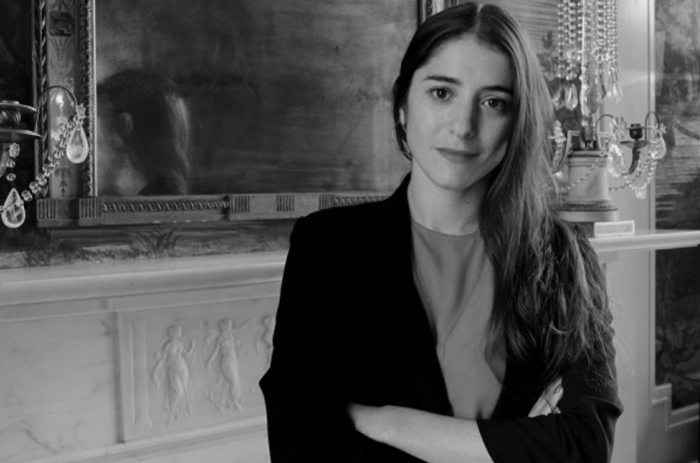
The Vilcek Foundation has named Argentine Director and Chief Curator of Art Aimé Iglesias Lukin as one of the three recipients of the Vilcek Prize for Creative Promise in Curatorial Work. The award recognizes immigrant contributions to the arts and sciences in the United States.
AIMÉ IGLESIAS LUKIN IS THE WINNER OF THE VILCEK AWARD
The Vilcek Foundation has named Argentine Director and Chief Curator of Art Aimé Iglesias Lukin as one of the three recipients of the Vilcek Prize for Creative Promise in Curatorial Work. The award recognizes immigrant contributions to the arts and sciences in the United States.
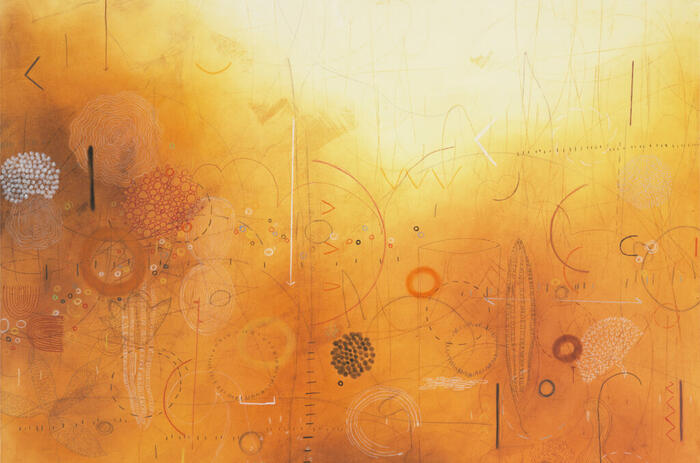
The Kemper Art Museum at Washington University in St. Louis presents Seeds: Containers of a World to Come. The exhibition features recent works and new commissions by ten nationally and internationally known artists for whom the seed is the kernel, both literally and metaphorically, for their investigations into issues of environmental fragility, preservation, and possibility in the face of the global climate crisis.
SEEDS: CRITIQUE AND HOPE AT THE KEMPER ART MUSEUM
The Kemper Art Museum at Washington University in St. Louis presents Seeds: Containers of a World to Come. The exhibition features recent works and new commissions by ten nationally and internationally known artists for whom the seed is the kernel, both literally and metaphorically, for their investigations into issues of environmental fragility, preservation, and possibility in the face of the global climate crisis.
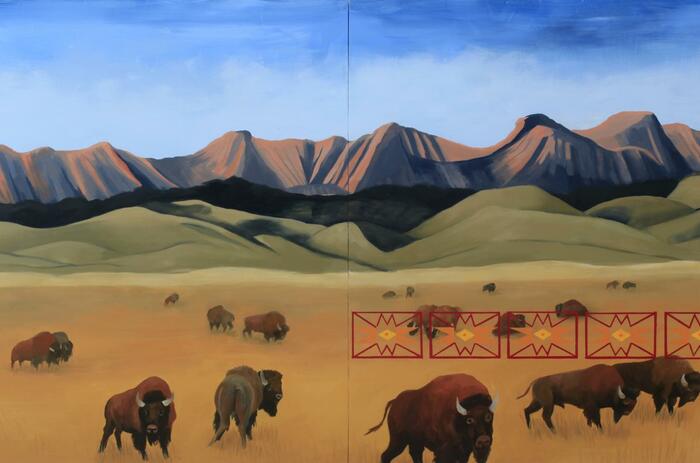
In February, an unprecedented survey of contemporary Native American art curated by Jaune Quick-to-See Smith (Citizen of the Confederated Salish and Kootenai Nation) opens at the Zimmerli Art Museum at Rutgers University—New Brunswick.
INDIGENOUS IDENTITIES: A GREAT ART EXHIBITION
In February, an unprecedented survey of contemporary Native American art curated by Jaune Quick-to-See Smith (Citizen of the Confederated Salish and Kootenai Nation) opens at the Zimmerli Art Museum at Rutgers University—New Brunswick.
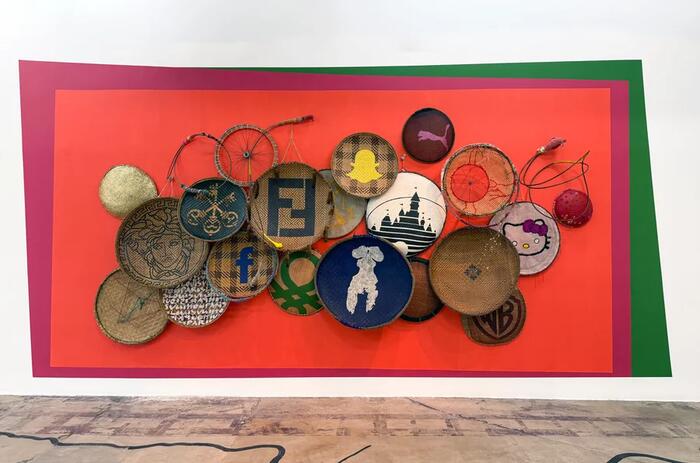
Dot Fiftyone Gallery presents Guapísimas: A Personal Journey Through Cultural Exchange and Transformation, a solo exhibition by multidisciplinary artist Pepe López; this thought-provoking showcase delves into the complexities of cultural syncretism, exploring the intersection of tradition and modernity in a globalized world.
PEPE LÓPEZ EXPLORES HOW CULTURAL IDENTITY EVOLVES IN A GLOBALIZED WORLD
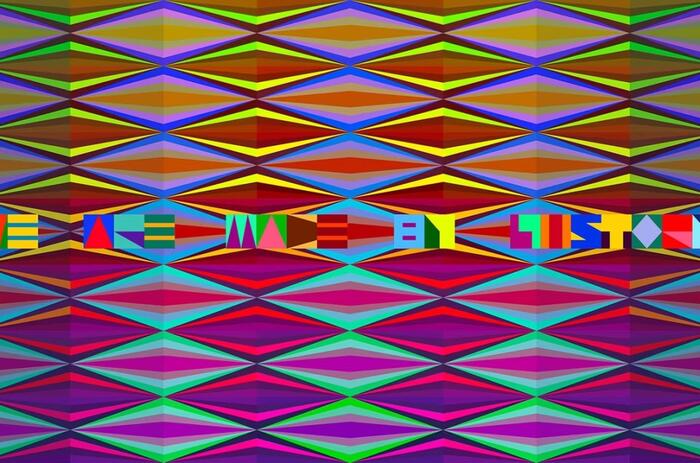
The Broad Museum is set to present Jeffrey Gibson: the space in which to place me, a special exhibition showcasing the artist’s multidimensional work. Adapted from its original presentation at the U.S. Pavilion at the 60th Biennale in 2024, this exhibition marks a historic moment—Gibson was the first Indigenous artist to represent the United States with a solo exhibition.
JEFFREY GIBSON IN LOS ANGELES: A KALEIDOSCOPE OF IDENTITY AND RESISTANCE
The Broad Museum is set to present Jeffrey Gibson: the space in which to place me, a special exhibition showcasing the artist’s multidimensional work. Adapted from its original presentation at the U.S. Pavilion at the 60th Biennale in 2024, this exhibition marks a historic moment—Gibson was the first Indigenous artist to represent the United States with a solo exhibition.

The Center for Art, Research and Alliances (CARA) spring 2025 exhibition, continents like seeds, brings together the work of La Chola Poblete (b. 1989, Argentina), Niño de Elche (b. 1985, Spain), and Pedro G. Romero (b. 1964, Spain); through sound, sculpture, performance, drawing, and painting, the show unravels and exposes the contradictions and ambiguities of colonial legacies.
QUESTIONING TRADITIONS AT CARA
The Center for Art, Research and Alliances (CARA) spring 2025 exhibition, continents like seeds, brings together the work of La Chola Poblete (b. 1989, Argentina), Niño de Elche (b. 1985, Spain), and Pedro G. Romero (b. 1964, Spain); through sound, sculpture, performance, drawing, and painting, the show unravels and exposes the contradictions and ambiguities of colonial legacies.

The Vilcek Foundation has named Argentine Director and Chief Curator of Art Aimé Iglesias Lukin as one of the three recipients of the Vilcek Prize for Creative Promise in Curatorial Work. The award recognizes immigrant contributions to the arts and sciences in the United States.
AIMÉ IGLESIAS LUKIN IS THE WINNER OF THE VILCEK AWARD
The Vilcek Foundation has named Argentine Director and Chief Curator of Art Aimé Iglesias Lukin as one of the three recipients of the Vilcek Prize for Creative Promise in Curatorial Work. The award recognizes immigrant contributions to the arts and sciences in the United States.

The Kemper Art Museum at Washington University in St. Louis presents Seeds: Containers of a World to Come. The exhibition features recent works and new commissions by ten nationally and internationally known artists for whom the seed is the kernel, both literally and metaphorically, for their investigations into issues of environmental fragility, preservation, and possibility in the face of the global climate crisis.
SEEDS: CRITIQUE AND HOPE AT THE KEMPER ART MUSEUM
The Kemper Art Museum at Washington University in St. Louis presents Seeds: Containers of a World to Come. The exhibition features recent works and new commissions by ten nationally and internationally known artists for whom the seed is the kernel, both literally and metaphorically, for their investigations into issues of environmental fragility, preservation, and possibility in the face of the global climate crisis.

In February, an unprecedented survey of contemporary Native American art curated by Jaune Quick-to-See Smith (Citizen of the Confederated Salish and Kootenai Nation) opens at the Zimmerli Art Museum at Rutgers University—New Brunswick.
INDIGENOUS IDENTITIES: A GREAT ART EXHIBITION
In February, an unprecedented survey of contemporary Native American art curated by Jaune Quick-to-See Smith (Citizen of the Confederated Salish and Kootenai Nation) opens at the Zimmerli Art Museum at Rutgers University—New Brunswick.

Dot Fiftyone Gallery presents Guapísimas: A Personal Journey Through Cultural Exchange and Transformation, a solo exhibition by multidisciplinary artist Pepe López; this thought-provoking showcase delves into the complexities of cultural syncretism, exploring the intersection of tradition and modernity in a globalized world.
PEPE LÓPEZ EXPLORES HOW CULTURAL IDENTITY EVOLVES IN A GLOBALIZED WORLD

The Broad Museum is set to present Jeffrey Gibson: the space in which to place me, a special exhibition showcasing the artist’s multidimensional work. Adapted from its original presentation at the U.S. Pavilion at the 60th Biennale in 2024, this exhibition marks a historic moment—Gibson was the first Indigenous artist to represent the United States with a solo exhibition.
JEFFREY GIBSON IN LOS ANGELES: A KALEIDOSCOPE OF IDENTITY AND RESISTANCE
The Broad Museum is set to present Jeffrey Gibson: the space in which to place me, a special exhibition showcasing the artist’s multidimensional work. Adapted from its original presentation at the U.S. Pavilion at the 60th Biennale in 2024, this exhibition marks a historic moment—Gibson was the first Indigenous artist to represent the United States with a solo exhibition.

The Center for Art, Research and Alliances (CARA) spring 2025 exhibition, continents like seeds, brings together the work of La Chola Poblete (b. 1989, Argentina), Niño de Elche (b. 1985, Spain), and Pedro G. Romero (b. 1964, Spain); through sound, sculpture, performance, drawing, and painting, the show unravels and exposes the contradictions and ambiguities of colonial legacies.
QUESTIONING TRADITIONS AT CARA
The Center for Art, Research and Alliances (CARA) spring 2025 exhibition, continents like seeds, brings together the work of La Chola Poblete (b. 1989, Argentina), Niño de Elche (b. 1985, Spain), and Pedro G. Romero (b. 1964, Spain); through sound, sculpture, performance, drawing, and painting, the show unravels and exposes the contradictions and ambiguities of colonial legacies.

The Vilcek Foundation has named Argentine Director and Chief Curator of Art Aimé Iglesias Lukin as one of the three recipients of the Vilcek Prize for Creative Promise in Curatorial Work. The award recognizes immigrant contributions to the arts and sciences in the United States.
AIMÉ IGLESIAS LUKIN IS THE WINNER OF THE VILCEK AWARD
The Vilcek Foundation has named Argentine Director and Chief Curator of Art Aimé Iglesias Lukin as one of the three recipients of the Vilcek Prize for Creative Promise in Curatorial Work. The award recognizes immigrant contributions to the arts and sciences in the United States.

The Kemper Art Museum at Washington University in St. Louis presents Seeds: Containers of a World to Come. The exhibition features recent works and new commissions by ten nationally and internationally known artists for whom the seed is the kernel, both literally and metaphorically, for their investigations into issues of environmental fragility, preservation, and possibility in the face of the global climate crisis.
SEEDS: CRITIQUE AND HOPE AT THE KEMPER ART MUSEUM
The Kemper Art Museum at Washington University in St. Louis presents Seeds: Containers of a World to Come. The exhibition features recent works and new commissions by ten nationally and internationally known artists for whom the seed is the kernel, both literally and metaphorically, for their investigations into issues of environmental fragility, preservation, and possibility in the face of the global climate crisis.

In February, an unprecedented survey of contemporary Native American art curated by Jaune Quick-to-See Smith (Citizen of the Confederated Salish and Kootenai Nation) opens at the Zimmerli Art Museum at Rutgers University—New Brunswick.
INDIGENOUS IDENTITIES: A GREAT ART EXHIBITION
In February, an unprecedented survey of contemporary Native American art curated by Jaune Quick-to-See Smith (Citizen of the Confederated Salish and Kootenai Nation) opens at the Zimmerli Art Museum at Rutgers University—New Brunswick.

Dot Fiftyone Gallery presents Guapísimas: A Personal Journey Through Cultural Exchange and Transformation, a solo exhibition by multidisciplinary artist Pepe López; this thought-provoking showcase delves into the complexities of cultural syncretism, exploring the intersection of tradition and modernity in a globalized world.
PEPE LÓPEZ EXPLORES HOW CULTURAL IDENTITY EVOLVES IN A GLOBALIZED WORLD

The Broad Museum is set to present Jeffrey Gibson: the space in which to place me, a special exhibition showcasing the artist’s multidimensional work. Adapted from its original presentation at the U.S. Pavilion at the 60th Biennale in 2024, this exhibition marks a historic moment—Gibson was the first Indigenous artist to represent the United States with a solo exhibition.
JEFFREY GIBSON IN LOS ANGELES: A KALEIDOSCOPE OF IDENTITY AND RESISTANCE
The Broad Museum is set to present Jeffrey Gibson: the space in which to place me, a special exhibition showcasing the artist’s multidimensional work. Adapted from its original presentation at the U.S. Pavilion at the 60th Biennale in 2024, this exhibition marks a historic moment—Gibson was the first Indigenous artist to represent the United States with a solo exhibition.

The Center for Art, Research and Alliances (CARA) spring 2025 exhibition, continents like seeds, brings together the work of La Chola Poblete (b. 1989, Argentina), Niño de Elche (b. 1985, Spain), and Pedro G. Romero (b. 1964, Spain); through sound, sculpture, performance, drawing, and painting, the show unravels and exposes the contradictions and ambiguities of colonial legacies.
QUESTIONING TRADITIONS AT CARA
The Center for Art, Research and Alliances (CARA) spring 2025 exhibition, continents like seeds, brings together the work of La Chola Poblete (b. 1989, Argentina), Niño de Elche (b. 1985, Spain), and Pedro G. Romero (b. 1964, Spain); through sound, sculpture, performance, drawing, and painting, the show unravels and exposes the contradictions and ambiguities of colonial legacies.

The Vilcek Foundation has named Argentine Director and Chief Curator of Art Aimé Iglesias Lukin as one of the three recipients of the Vilcek Prize for Creative Promise in Curatorial Work. The award recognizes immigrant contributions to the arts and sciences in the United States.
AIMÉ IGLESIAS LUKIN IS THE WINNER OF THE VILCEK AWARD
The Vilcek Foundation has named Argentine Director and Chief Curator of Art Aimé Iglesias Lukin as one of the three recipients of the Vilcek Prize for Creative Promise in Curatorial Work. The award recognizes immigrant contributions to the arts and sciences in the United States.

The Kemper Art Museum at Washington University in St. Louis presents Seeds: Containers of a World to Come. The exhibition features recent works and new commissions by ten nationally and internationally known artists for whom the seed is the kernel, both literally and metaphorically, for their investigations into issues of environmental fragility, preservation, and possibility in the face of the global climate crisis.
SEEDS: CRITIQUE AND HOPE AT THE KEMPER ART MUSEUM
The Kemper Art Museum at Washington University in St. Louis presents Seeds: Containers of a World to Come. The exhibition features recent works and new commissions by ten nationally and internationally known artists for whom the seed is the kernel, both literally and metaphorically, for their investigations into issues of environmental fragility, preservation, and possibility in the face of the global climate crisis.

In February, an unprecedented survey of contemporary Native American art curated by Jaune Quick-to-See Smith (Citizen of the Confederated Salish and Kootenai Nation) opens at the Zimmerli Art Museum at Rutgers University—New Brunswick.
INDIGENOUS IDENTITIES: A GREAT ART EXHIBITION
In February, an unprecedented survey of contemporary Native American art curated by Jaune Quick-to-See Smith (Citizen of the Confederated Salish and Kootenai Nation) opens at the Zimmerli Art Museum at Rutgers University—New Brunswick.

Dot Fiftyone Gallery presents Guapísimas: A Personal Journey Through Cultural Exchange and Transformation, a solo exhibition by multidisciplinary artist Pepe López; this thought-provoking showcase delves into the complexities of cultural syncretism, exploring the intersection of tradition and modernity in a globalized world.
PEPE LÓPEZ EXPLORES HOW CULTURAL IDENTITY EVOLVES IN A GLOBALIZED WORLD

The Broad Museum is set to present Jeffrey Gibson: the space in which to place me, a special exhibition showcasing the artist’s multidimensional work. Adapted from its original presentation at the U.S. Pavilion at the 60th Biennale in 2024, this exhibition marks a historic moment—Gibson was the first Indigenous artist to represent the United States with a solo exhibition.
JEFFREY GIBSON IN LOS ANGELES: A KALEIDOSCOPE OF IDENTITY AND RESISTANCE
The Broad Museum is set to present Jeffrey Gibson: the space in which to place me, a special exhibition showcasing the artist’s multidimensional work. Adapted from its original presentation at the U.S. Pavilion at the 60th Biennale in 2024, this exhibition marks a historic moment—Gibson was the first Indigenous artist to represent the United States with a solo exhibition.

The Center for Art, Research and Alliances (CARA) spring 2025 exhibition, continents like seeds, brings together the work of La Chola Poblete (b. 1989, Argentina), Niño de Elche (b. 1985, Spain), and Pedro G. Romero (b. 1964, Spain); through sound, sculpture, performance, drawing, and painting, the show unravels and exposes the contradictions and ambiguities of colonial legacies.
QUESTIONING TRADITIONS AT CARA
The Center for Art, Research and Alliances (CARA) spring 2025 exhibition, continents like seeds, brings together the work of La Chola Poblete (b. 1989, Argentina), Niño de Elche (b. 1985, Spain), and Pedro G. Romero (b. 1964, Spain); through sound, sculpture, performance, drawing, and painting, the show unravels and exposes the contradictions and ambiguities of colonial legacies.

The Vilcek Foundation has named Argentine Director and Chief Curator of Art Aimé Iglesias Lukin as one of the three recipients of the Vilcek Prize for Creative Promise in Curatorial Work. The award recognizes immigrant contributions to the arts and sciences in the United States.
AIMÉ IGLESIAS LUKIN IS THE WINNER OF THE VILCEK AWARD
The Vilcek Foundation has named Argentine Director and Chief Curator of Art Aimé Iglesias Lukin as one of the three recipients of the Vilcek Prize for Creative Promise in Curatorial Work. The award recognizes immigrant contributions to the arts and sciences in the United States.

The Kemper Art Museum at Washington University in St. Louis presents Seeds: Containers of a World to Come. The exhibition features recent works and new commissions by ten nationally and internationally known artists for whom the seed is the kernel, both literally and metaphorically, for their investigations into issues of environmental fragility, preservation, and possibility in the face of the global climate crisis.
SEEDS: CRITIQUE AND HOPE AT THE KEMPER ART MUSEUM
The Kemper Art Museum at Washington University in St. Louis presents Seeds: Containers of a World to Come. The exhibition features recent works and new commissions by ten nationally and internationally known artists for whom the seed is the kernel, both literally and metaphorically, for their investigations into issues of environmental fragility, preservation, and possibility in the face of the global climate crisis.

In February, an unprecedented survey of contemporary Native American art curated by Jaune Quick-to-See Smith (Citizen of the Confederated Salish and Kootenai Nation) opens at the Zimmerli Art Museum at Rutgers University—New Brunswick.
INDIGENOUS IDENTITIES: A GREAT ART EXHIBITION
In February, an unprecedented survey of contemporary Native American art curated by Jaune Quick-to-See Smith (Citizen of the Confederated Salish and Kootenai Nation) opens at the Zimmerli Art Museum at Rutgers University—New Brunswick.

Dot Fiftyone Gallery presents Guapísimas: A Personal Journey Through Cultural Exchange and Transformation, a solo exhibition by multidisciplinary artist Pepe López; this thought-provoking showcase delves into the complexities of cultural syncretism, exploring the intersection of tradition and modernity in a globalized world.
PEPE LÓPEZ EXPLORES HOW CULTURAL IDENTITY EVOLVES IN A GLOBALIZED WORLD

The Broad Museum is set to present Jeffrey Gibson: the space in which to place me, a special exhibition showcasing the artist’s multidimensional work. Adapted from its original presentation at the U.S. Pavilion at the 60th Biennale in 2024, this exhibition marks a historic moment—Gibson was the first Indigenous artist to represent the United States with a solo exhibition.
JEFFREY GIBSON IN LOS ANGELES: A KALEIDOSCOPE OF IDENTITY AND RESISTANCE
The Broad Museum is set to present Jeffrey Gibson: the space in which to place me, a special exhibition showcasing the artist’s multidimensional work. Adapted from its original presentation at the U.S. Pavilion at the 60th Biennale in 2024, this exhibition marks a historic moment—Gibson was the first Indigenous artist to represent the United States with a solo exhibition.




